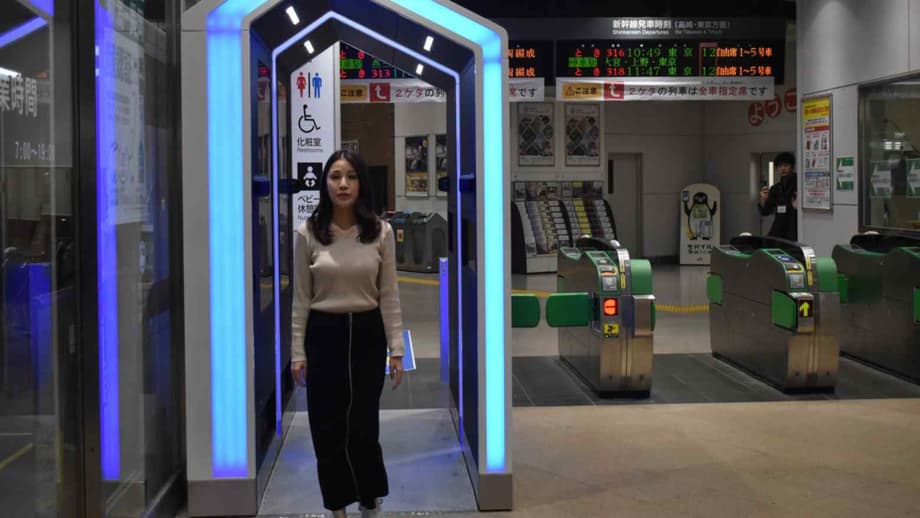A trial on the Joetsu Shinkansen begins
East Japan Railway (JR East) has begun a public trial of facial recognition ticket gates for the Joetsu Shinkansen, giving registered passengers a way to pass through without a paper ticket or an IC card. The trial sites are Niigata Station and Nagaoka Station, each with one experimental lane alongside the standard gates. The schedule runs from November 6, 2025 to March 31, 2026, and the earliest users are commuters who hold Shinkansen passes for the section between the two stations. The test is designed to check whether travelers can keep walking while the system confirms their identity, so gate passage feels as natural as a regular stroll. JR East says the gates are intended to be easy for people who are carrying luggage or managing strollers, and the company wants to confirm reliability during busy periods as well as calm times.
JR East frames the trial as part of its Suica Renaissance plan, a long term effort to evolve the familiar Suica platform into a broader access service. The company is exploring options that go past the tap with a card or phone to arrive at touch free entry, especially at large stations where queues form quickly. Face based access is one candidate, and the company is pairing it with careful limits on who can try the system and how the data is handled. The move comes as rail operators in Japan expand payment and access choices, from contactless credit cards to biometric gates, to make stations easier to use for daily commuters and a growing number of overseas visitors.
How the face gate works
The experimental gates use a camera to capture a traveler’s face as they approach. Software compares the image against a template that the passenger created during advance registration. When the match meets a preset threshold, the flaps open and the screen shows that the fare has been processed. If the system does not recognize the person, the gate remains closed and the traveler can use a standard ticket or an IC card lane instead. JR East says the algorithm is designed to handle everyday changes such as glasses and masks, and to authenticate at normal walking speed without requiring people to pause.
Participation is by opt in. Monitors register a facial photo that is linked to their commuter pass through a secure channel, then use the new lane during the test period and answer surveys about the experience. JR East and its partners state that the biometric data is encrypted, stored for limited periods, and used only to authenticate access at the gate. The gates include liveness checks to reduce the risk that a printed photo or a screen could fool the system. The trial will also measure how the equipment performs under different lighting and crowd conditions, which can affect camera based recognition.
Which companies built the systems?
Two technology suppliers are involved. At Niigata Station, NEC cameras and recognition units are attached to existing JR East gates, which allows the company to see how facial identification can be added within current station layouts. At Nagaoka Station, JR East Mechatronics and Panasonic Connect installed a new model of gate that integrates cameras and displays. Testing both arrangements should help the operator compare accuracy and ease of installation, as well as collect feedback on visibility, prompts, and sound cues.
Where and when, and who can participate
The trial is limited to one lane at the Shinkansen area in each station, so the rest of the gates continue to operate as usual. The schedule runs for about five months from November 6, 2025 to March 31, 2026. JR East says it will evaluate how well the system works at fully operational stations rather than in a lab, which means the gates will face rush hours, luggage laden travelers, and the occasional service disruption that jumbles passenger flow.
JR East is recruiting public monitors who are junior high school age or older and hold a Suica FREX or Suica FREX Pal Shinkansen commuter pass for the Niigata to Nagaoka section. Advance registration, including photo submission, was held from October 6 to 17, and the company expects roughly 500 participants. Monitors will be asked to complete questionnaires, and JR East is offering a 3,000 yen gift certificate for the CoCoLo station shopping centers as thanks. After this initial phase, the operator plans to open the gates to additional groups, including members of the Otona no Kyujitsu Club and users of the Shinkansen electronic ticket service.
What JR East hopes to learn
The company outlined a checklist that ranges from pedestrian speed to camera angle. Engineers will test the ideal distance between a face and the lens, the tilt and height of the camera, how fast the recognition software returns a decision, and how often the system rejects a valid passenger. Staff will also look at placement within the station, signage that guides people into the lane, and how lighting or reflections from luggage affect the camera.
Because Niigata uses an add on unit and Nagaoka uses a new gate, JR East can compare two installation paths. One benefits from reusing existing equipment. The other might offer smoother integration because cameras and displays are designed as part of the gate. Results will guide the next steps. JR East has said it will consider expanding the user pool after the first round, and it plans a separate test of non facial recognition technologies on conventional lines by spring 2027. The long term goal is a walk through gate that is dependable enough to deploy widely within the next decade.
Measuring flow and false rejections
Throughput and reliability matter as much as accuracy. A gate that occasionally denies a valid user will slow a queue and frustrate people who must reattempt or switch lines. The test will help JR East set thresholds, such as the minimum match score that balances speed with confidence, and decide how many seconds a traveler should expect for a typical passage. Those real world settings will shape whether the experience feels smoother than tapping a card.
Japan is moving to touch free rail access
Rail operators across Japan are testing new ways to pass through gates while keeping the familiar card based systems in place. Osaka Metro introduced face based gates at nearly all of its stations in March, turning the feature into a daily routine for commuters. Keisei Electric Railway added a facial recognition option for issuing Skyliner express tickets, a route that serves many international visitors traveling between central Tokyo and Narita Airport. Several operators now also accept contactless credit cards directly at gates on select lines.
The expansion of options reflects two pressures. Cities want to relieve bottlenecks at peak times without building new corridors, and services need to be easy for first time riders. That applies to tourists who may not own a local IC card and to families who find it awkward to handle paper tickets while carrying bags and strollers. JR East’s project tests whether touch free access can be fast and intuitive enough to be worth adding next to Suica and mobile wallets.
Privacy, fairness, and legal guardrails
Biometric systems sit inside a sensitive debate. Privacy advocates worry about data breaches, expanded surveillance, or unfair error rates that affect some groups more than others. Studies in the past have shown that some facial recognition algorithms misidentify women and people with darker skin at higher rates. JR East has stressed that participation is voluntary and that the system is for authentication at the gate, not for station wide tracking.
Japan’s data protection rules require clarity about the purpose of data collection and informed consent. Companies must secure personal data, limit retention, and allow people to withdraw consent. JR East says face data registered for this trial will be encrypted and stored only for the time and purpose needed to let a registered passenger pass the gate. The gates include liveness detection, a feature designed to distinguish a real person from a photograph or a video played on a screen.
Panasonic Connect, which supplies the system at Nagaoka, described the recognition engine and gate design as built to work in daily conditions and to deter impersonation.
“The technology is robust against changes in facial orientation, aging, glasses, and masks, and includes anti spoofing features.”
JR East will also study whether the system introduces any bias in real station use. The monitor program, which recruits ordinary commuters, should help the operator spot and fix issues that lab tests miss, such as camera glare from winter sunlight at certain hours or placement that disadvantages shorter riders.
What this could mean for passengers and stations
If the results are positive, face based access could change the practical details of a trip. A traveler with a trolley bag or a parent pushing a stroller would no longer need to find a hand free moment to tap a card or insert a ticket. The gate could also help passengers who carry a phone pass but worry about battery life at the end of a long day. For most people, the experience needs to be as simple as walking toward the lane and looking ahead briefly.
Station staff would still need to manage the lanes, answer questions, and help anyone who struggles with the new system. The fallback remains the same as today, because all stations will keep their usual gates and IC card acceptance. If JR East extends biometric access across more locations, it will also need consistent signs, clear opt in flows, and ways to delete data easily when a rider decides to stop using the feature.
What to watch next
The current test runs through the end of March 2026. JR East plans to evaluate accuracy, speed, and user feedback, then expand the eligible user groups and potentially the number of stations. A separate study on non facial identification methods for conventional lines is planned around spring 2027. Those results will inform whether the operator can deliver a reliable walk through gate within the next ten years.
Another milestone sits outside the Shinkansen network. Facial recognition is slated for staff entrance gates at the 2025 Osaka Kansai Expo grounds. Airports have increasingly moved to automated biometric gates for border control and boarding. The performance of this technology in those settings, and public comfort with it, will frame the reception for wider use in rail hubs.
What to Know
- JR East is piloting facial recognition ticket gates on the Joetsu Shinkansen at Niigata and Nagaoka, one lane at each station.
- The trial runs from November 6, 2025 to March 31, 2026 at fully operational stations.
- Registered users can pass without tickets or IC cards, with the system designed to work with glasses and masks.
- NEC supplies the devices at Niigata on existing gates, while Nagaoka tests a new gate with Panasonic Connect hardware.
- About 500 public monitors, all Shinkansen commuter pass holders between Niigata and Nagaoka, registered in October and will complete surveys.
- JR East is studying walking speed, camera angle, distance to the lens, accuracy, and the best installation locations.
- Biometric data is encrypted, retained for limited periods, and used only for gate authentication, with liveness checks against spoofing.
- After the first phase, JR East plans to expand access to Otona no Kyujitsu Club members and Shinkansen electronic ticket users.
- Osaka Metro already operates facial recognition gates at most stations, and rail operators are expanding contactless credit card acceptance.
- JR East plans tests of non facial technologies on conventional lines around spring 2027 and aims to establish walk through gates within the next decade.




